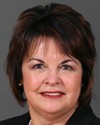The National Energy Board requires that plans be submitted.
These contingency plans are supposed to address all of the response measures in case of an oil spill. Traditionally, in the Beaufort we have had a requirement for a relief well. This is a policy of the Government of Canada. The National Energy Board has assured recently in a letter to the media that they will look for plans for a relief well in those contingency plans.
We see a variety of situations in the Beaufort Sea. There is a variety of drilling situations. In the landfast ice, for instance, where we see most of the drilling, it's a shallow sea, and there is a long period of landfast ice, where drilling takes place on ice. It is quite easy to build up an ice pad and put a second relief well rig on that ice pad adjoining the original drilling platform.
What BP and some of the current interest holders are looking at now is drilling in deeper waters. We've seen drilling in up to 200 metres of water in the Beaufort Sea, historically. We may be seeing some of these licences in deeper water depths. What they're thinking of is purpose-built ships that are ice-class ships designed specifically for the Canadian Beaufort Sea.
What we're also looking at is having technology that is a more rapid response to contain a spill in the worst-case scenario than having to drill a second well into the lower horizons to contain the pressures that would mount from a blowout.



